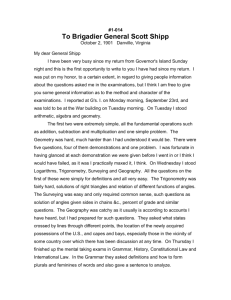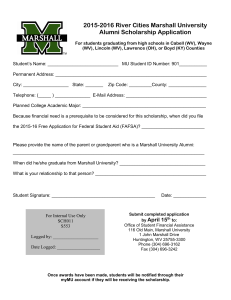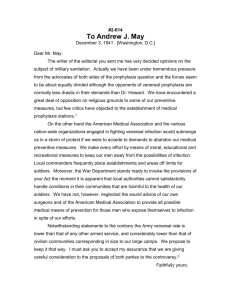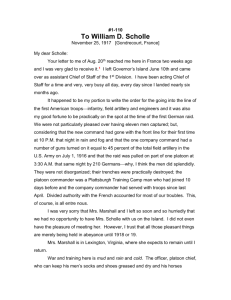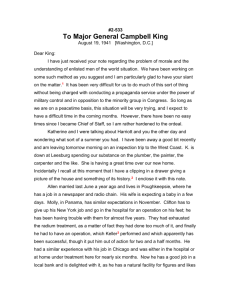1-316 - George C. Marshall Foundation
advertisement
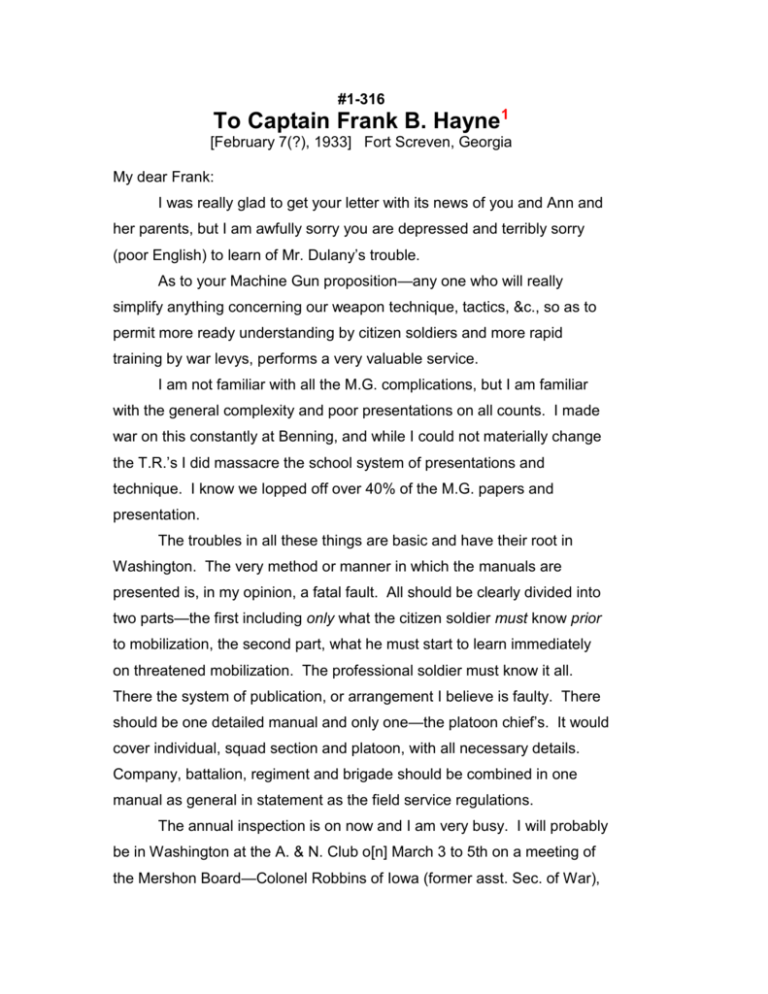
#1-316 To Captain Frank B. Hayne1 [February 7(?), 1933] Fort Screven, Georgia My dear Frank: I was really glad to get your letter with its news of you and Ann and her parents, but I am awfully sorry you are depressed and terribly sorry (poor English) to learn of Mr. Dulany’s trouble. As to your Machine Gun proposition—any one who will really simplify anything concerning our weapon technique, tactics, &c., so as to permit more ready understanding by citizen soldiers and more rapid training by war levys, performs a very valuable service. I am not familiar with all the M.G. complications, but I am familiar with the general complexity and poor presentations on all counts. I made war on this constantly at Benning, and while I could not materially change the T.R.’s I did massacre the school system of presentations and technique. I know we lopped off over 40% of the M.G. papers and presentation. The troubles in all these things are basic and have their root in Washington. The very method or manner in which the manuals are presented is, in my opinion, a fatal fault. All should be clearly divided into two parts—the first including only what the citizen soldier must know prior to mobilization, the second part, what he must start to learn immediately on threatened mobilization. The professional soldier must know it all. There the system of publication, or arrangement I believe is faulty. There should be one detailed manual and only one—the platoon chief’s. It would cover individual, squad section and platoon, with all necessary details. Company, battalion, regiment and brigade should be combined in one manual as general in statement as the field service regulations. The annual inspection is on now and I am very busy. I will probably be in Washington at the A. & N. Club o[n] March 3 to 5th on a meeting of the Mershon Board—Colonel Robbins of Iowa (former asst. Sec. of War), Gen. Gignilliat of Culver and myself. The Secretary of the Board picked inauguration as a good time and has engaged our rooms already. 2 I will see the Dulanys then, and I hope you and Ann. I suppose I will see you parade. With affectionate regards to you both, Faithfully yours, G. C. M. Document Copy Text Source: Frank B. Hayne Papers, George C. Marshall Research Library, Lexington, Virginia. Document Format: Handwritten letter signed. 1. Hayne and his wife, Ann Dulany Hayne, had been in Tientsin, China, with the Marshalls. At this time, Hayne was in the Thirty-fourth Infantry at Fort George G. Meade, Maryland. 2. The Civilian Military Education Fund (also called the “Mershon Fund”), whose goals were to improve civilian-military relations and to promote civilian military and Reserve officer training, was established by Colonel Ralph D. Mershon, an electrical engineer and inventor. An alumnus of Ohio State University, Mershon had been active in drafting legislation for the Reserve Officers’ Training Corps and having it included in the National Defense Act of 1916. Marshall was appointed to the Mershon Fund Board in 1929. Colonel Charles S. Robbins, an officer in the Iowa National Guard who had seen army service in the Philippines (1898–99) and France (1917–19), and a former assistant secretary of war (1928–29), was chairman of the Mershon Fund’s National Committee. Colonel Ralph C. Bishop was the board’s secretary. Recommended Citation: The Papers of George Catlett Marshall, ed. Larry I. Bland and Sharon Ritenour Stevens (Lexington, Va.: The George C. Marshall Foundation, 1981– ). Electronic version based on The Papers of George Catlett Marshall, vol. 1, “The Soldierly Spirit,” December 1880-June 1939 (Baltimore and London: The Johns Hopkins University Press, 1981), pp. 386–387.

